When a great Detroit designer dared to redesign the Cobra…the result was the Mercer Cobra
by Wallace Wyss –
Just about everything about old Cobras is solid gold, value wise.
Which makes you kinda wonder about this car that started out life as a Cobra only to be rebodied to a design by a famous American designer–the guy from Chrysler who was The Tailfin King.
The Virgil Exner-designed Mercer Cobra, CSX2451, is named after an extinct pre-war American car company called Mercer (whose most famous car was the “Raceabout”) but this one created decades after Mercer’s downfall should have been called the “Exner Cobra”.
Virgil Exner Sr. was famous for helping start the whole tailfin phase at Chrysler, sold as “the forward look.” Out of some 40 plus “dream cars” bodied in Italy for Chrysler, he was responsible for most of them.
The only one that reached production looking almost the same as the dream car was the Dual Ghia, actually made by a Detroit entrepreneur who bought the design of the Dodge Fire Arrow show car. Ironically the Mercer Cobra has nary a tailfin.
After leaving Chrysler Exner Sr., and his son, Virgil Exner Jr., opened a design studio in Bloomfield Hills, right on the famed Woodward Ave. They began designing cars for private clients.
Among them was the Copper Development association. In 1963, Exner had made four drawings for Esquire magazine predicting what four classic names in American cars (including Mercer) would look like if they made a new car. All the cars were what you would describe today as “Full on balls-to-the-wall take-no-prisoners Retro.”
Mercer Cobra
Among the cars was a Mercer. It turned out that the Copper Development Association President George Hartley, liked that design and approved it as his associations upcoming show car. It was the association’s practice to periodically build show cars showcasing the wonders of copper.
A 1964 Cobra was bought from Shelby-American and lengthened and the conversion to the Mercer Cobra began.
A small Italian carrozzeria, Sabona-Basano, run by at least one ex-Ghia employee, was awarded the contract to build the car but the Exners went over to Italy to supervise the building as well.
As much copper as possible was featured on the Mercer Cobra, even to the gauge bezels which look very much like Chrysler gauges of the last few years. The copper bezels were not functional but underneath the original Cobra gauges were kept.
The car was never planned on being drivable so there was a lot of leeway in making the design wild and not having to worry about hobbling the driving. The various metals were finished in the best texture, some of the metals being bronze, some brass, some copper, in order to show the versatility available in each metal.
This was a homage of sorts to the art deco movement in design which in part involved highlighting the natural finish available in metal (see the elevator doors in the Chrysler building in NYC, for instance).
The car had a racing windscreen wrapping around the cockpit. There was no provision for a convertible top. The headlights popped out when needed. The car had dual sidepipes similar to those seen on one or two small block Cobras used in racing. Another feature of the car was scoop-like vents behind the rear wheels similar to those on the Pininfarina designed Ferrari Superfast. The interior is black leather set off with white piping.
In June, 1979, the car was offered for $165,000. That was before Gen. William Lyon, a California home builder, bought it and it was under his ownership that it was displayed on the “dream car lawn” at Pebble Beach. The family later on sold it.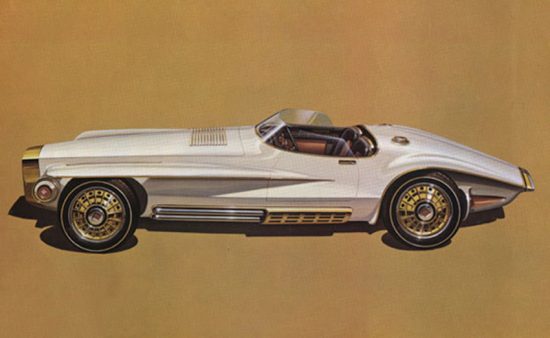
Ironically, today a stock bodied AC Shelby Cobra of that vintage is worth closer to $800,000, so it makes you wonder, is it worth taking this body off and rebodying it as a Cobra again, so it looks like hundreds of other small block Cobras?
I say “no” because, as time goes on, we realize how brilliant Exner’s designs were. And this one is a joy to see in person if you like metal finishes because it employs many types of metal from copper to bronze to aluminum.
Let us know what you think in the Comments.
THE AUTHOR: Wyss, a historian who has authored 18 automotive histories, is wearing his fine art hat, making paintings for his one man show at his Art & Books booth at Concours Italiano this August.
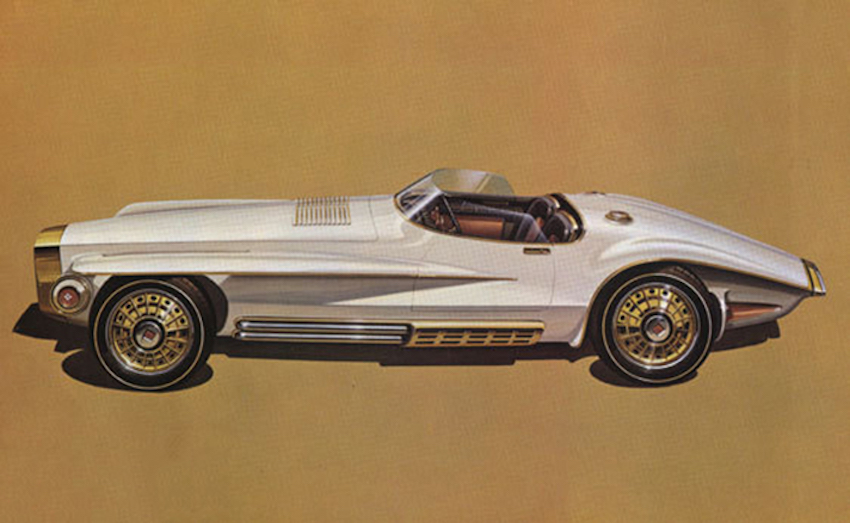
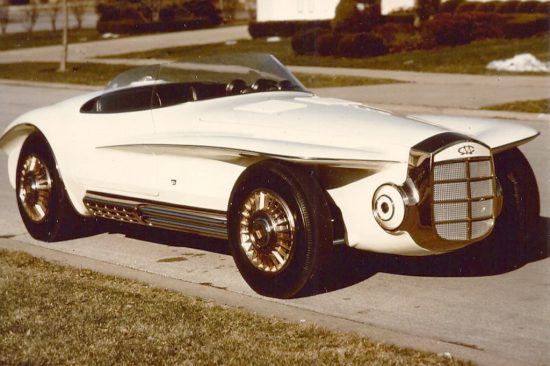
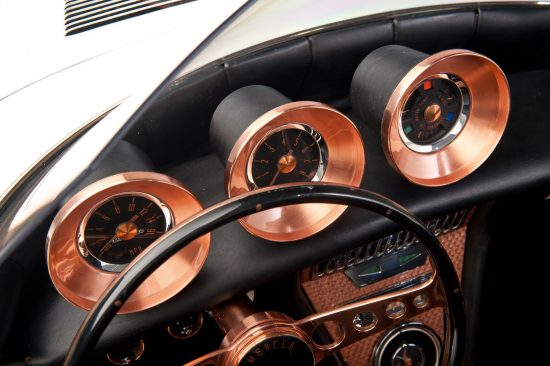

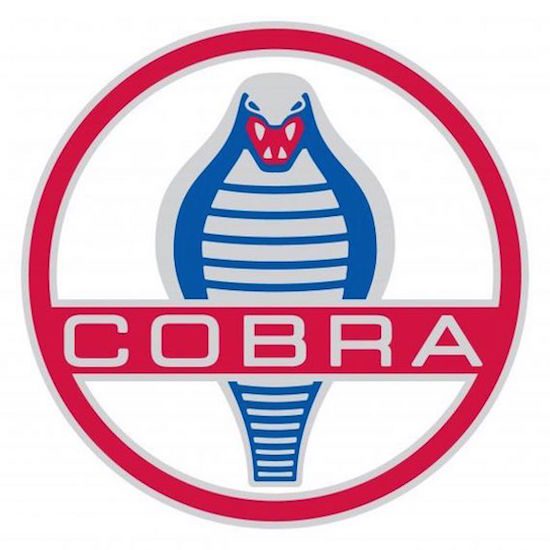
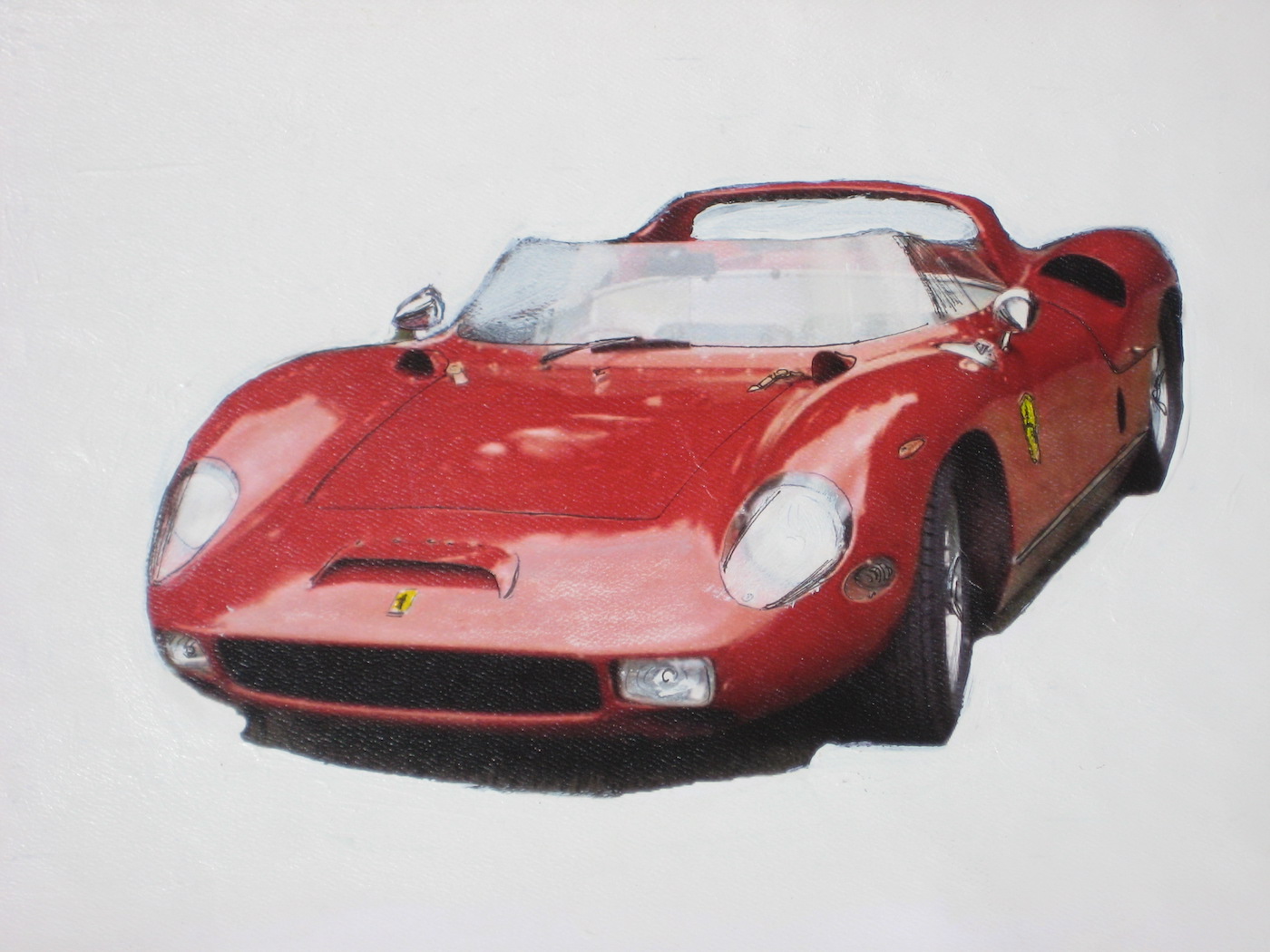

’64 has it really been that long.
I remember seeing it and knew it was a winner. It almost started the repro vintage era among the kit cars and boutique makers.
The lines are perfect and do Evoke the original. Both the Mercer and the Stutz were what this aspires too, and it does the job.
One would hope that they would work on that chassis as the (260 and 289) Cobra, as fast as it was needed a much tighter chassis. Drive an unmodified one and it felt like it was mounted on one big spring.
I think that this effort holds up quite well, but not as well as the original AC. My guess; worth, about one-half of the AC now. Anyone have the lates value?
Here’s a few quotes from the Shelby Cobra Registry that might give some context to any discussion about this car’s current and/or potential value:
“CSX2451 was built by AC cars as a bare chassis, stretched 18 inches, to provide a 108 inch platform for a custom project ordered through Shelby American in 2/64. It was invoiced to Shelby American on 3/24/64 and to Virgil Exner, Inc. on 4/16/64 for $2800 (that’s right, $2800) as “one left hand drive chassis complete with front and rear axle assemblies, including disc brakes, road springs, 5 road wheels (4 with tires and tubes). Engine and gearbox supplied free with installation kit, including radiator, petrol tank, all supplied, packed to chassis, including wiring and instrumentation.” Estimated charges, London Airport to Turin, insurance and handling charges ($171). ”
(My comment—Thus, no body and no interior and few if any of the other unobtanium parts required should someone buy this car with the intent to “restore” it and take home the big money from one of the Monterey auctions.)
“Exhibited at the Paris Auto Show late in 1964, it was quickly dubbed “The Flying Bathtub” by French journalists, some of whom made additional unflattering comparisons of the car to certain parts of a penguin’s anatomy (see Car and Driver, 8/64).”
“It was bought in the early 70’s by a collector of prototypes and one-offs, then offered for sale in 1979 by a dealer in Marietta, GA, who described it as an excellent long term investment for the discriminating connoisseur, at a price of $165,000. It next appeared for sale in 6/80 by a seller who indicated bids were being accepted in the $100,000 range. The Spring of 1981 brought a third appearance in the sale column, with the car offered at a price of $80,000. Strange how such an ‘excellent long term investment’ dropped in price by fully one half over the space of three years, isn’t it?”
Final comment in the Registry: “Although given a Cobra serial number, CSX2451 has never been considered anything other than a long wheelbase, custom-bodied vehicle, and its construction as such lowers by one the number of chassis actually built as Cobra roadsters.”
It would therefore seem the value of the “Flying Bathtub” would more likely reflect that of other one-off special vehicles and not be tied to the value of original AC Cobras.
Small block Cobras are currently selling for around a million dollars, plus or minus, depending on the car’s history and originality and this car would therefore likely sell for a lot less, even if “restored” or, perhaps stated more accurately, constructed as an original Cobra.
Thanks for all the info Alex…..
Imagine, $2800. I remember going to a Chicago Ford dealer with a couple of friends, an invite to see the upstairs holding area.
He had at least 4 GT350S at around 5-6k. and I(‘m thinking he had a 289 AC), so cool, but that may have been a little later
Boy, that seems so little for a car with almost no interior, yeah, sure, a year’s salary, before taxes.
PS; the subject car at perhaps 250k would seem fair.
The other hidden treasures are the Frua bodied Cobras. All have CSX chassis’s yet they sell for under 250K
Though sometimes I am dubious of the phrase “celebrity car,” especially when said car was never titled under the celeb’s name, I still think this car should be worth more as an excellent example of pure Exner (In this case both father and son worked on it) , Exner freed from the shackles of Chrysler. I feel the same about Raymond Lowey, and would feel proud to drive around one of his specials (He had cars customized for himself, including two Jaguars) if only because, if anybody asks about it, I can talk about one of my childhood heroes (the first industrial designer I ever heard of).
Also , being of an artistic bent, I appreciate the trouble that the Exners went to in selecting various metals like copper and brass, and distributing them in various finishes throughout the vehicle. In that way the car is “art deco” in that it is sort of a rolling homage to the beauty of metal. Any jeweler should love it.
Still hate the flip-out headlights, tho.